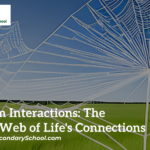Natural Hazards
Nature is a force of incredible beauty and wonder, but it also holds within its depths a potential for destruction that can be both awe-inspiring and terrifying. Natural hazards, often triggered by geological, atmospheric, or hydrological processes, are events that threaten life, property, and the environment. From earthquakes and hurricanes to tsunamis and volcanic eruptions, these occurrences serve as poignant reminders of our vulnerability in the face of the Earth’s immense power.
Types of Natural Hazards
- Geological Hazards: These hazards originate from the Earth’s geological processes. Earthquakes, volcanic eruptions, landslides, and tsunamis fall under this category, often occurring due to the movement of tectonic plates or other geological shifts.
- Atmospheric Hazards: These hazards are primarily related to the Earth’s atmosphere. Hurricanes, tornadoes, thunderstorms, and blizzards are examples of atmospheric hazards, driven by temperature, pressure, and moisture gradients.
- Hydrological Hazards: These hazards are connected to water and can involve flooding, avalanches, and mudslides. They are often caused by excessive rainfall, snowmelt, or changes in water flow patterns.
- Biological Hazards: While not always thought of in the same category, biological hazards like pandemics, insect infestations, and disease outbreaks are also natural events that can have significant societal impacts.
Impact and Vulnerability
The impact of natural hazards can be profound, leading to loss of life, displacement, destruction of infrastructure, and economic setbacks. Vulnerability to these hazards varies based on factors such as population density, infrastructure quality, preparedness, and socio-economic conditions. Developing regions and coastal areas are often more susceptible due to limited resources for disaster preparedness and the potential for large populations to be affected.
Prevention, Mitigation, and Preparedness
- Prevention: While some natural hazards are inherently uncontrollable, others can be mitigated through careful urban planning, land use regulations, and responsible resource management. For instance, avoiding construction in earthquake-prone areas or building structures to withstand hurricanes can reduce the impact of these hazards.
- Mitigation: Mitigation strategies involve actions that reduce the severity of a hazard’s impact. This can include creating barriers against flooding, reinforcing buildings, establishing early warning systems, and designing resilient infrastructure.
- Preparedness: Preparedness is crucial for minimizing the loss of life and property during and after a hazard event. Developing emergency response plans, educating communities about evacuation procedures, and conducting drills can save lives and improve overall resilience.
Technology and Research
Advancements in technology have revolutionized our ability to predict and respond to natural hazards. Seismic monitoring systems can provide early warnings for earthquakes, meteorological satellites track the development of hurricanes, and remote sensing aids in monitoring volcanic activity. Additionally, scientific research helps us understand the underlying processes of these hazards, enabling better preparation and response.
Global Cooperation and Resilience
Natural hazards do not adhere to geopolitical boundaries, and their impacts can transcend national borders. International cooperation is essential in sharing knowledge, resources, and expertise to effectively manage and respond to these events. Building resilient communities that can bounce back from disasters is an integral part of safeguarding societies against the unexpected.
Conclusion
Natural hazards serve as reminders of the delicate balance we share with our planet’s dynamic processes. While we cannot control these events, we can enhance our understanding, preparedness, and resilience to minimize their impact on human lives and the environment. By uniting science, technology, and global collaboration, we can navigate the unpredictable forces of nature and create a safer, more resilient world for ourselves and future generations.




